So you want to learn how to cook perfect filet mignon with a red wine reduction? First off—excellent choice. You’re not just aiming for steak; you’re going for the steak. The showstopper. The Beyoncé of beef. And I don’t blame you. When done right, filet mignon is buttery, tender, and elegant enough to make you feel like you’ve just mastered the culinary arts. Add a red wine reduction? Now we’re talking date-night-at-home-that-actually-impresses level.
I’ve cooked filet mignon more times than I’d like to admit (mainly because I’m slightly addicted to that melt-in-your-mouth vibe). I’ve tried pan-searing, oven-finishing, grill experiments—you name it. The recipe I’m sharing with you? It works. Every. Single. Time.
Let’s dive in (ugh, scratch that, we walk boldly into this steak adventure) and talk filet, flavor, and that glossy, restaurant-worthy sauce.
Why Filet Mignon Is Worth the Hype
Filet mignon isn’t just steak—it’s the royalty of cuts. Cut from the tenderloin, it’s known for being ridiculously tender with a mild, buttery flavor. That softness? You can thank the fact that this muscle barely gets a workout. (Lucky, lazy little muscle.)
Sure, it’s a bit pricey. But for special occasions—or if you’re just in a “treat yo’ self” mood—filet mignon is the move. Add a rich red wine reduction on top? You just went full Gordon Ramsay.
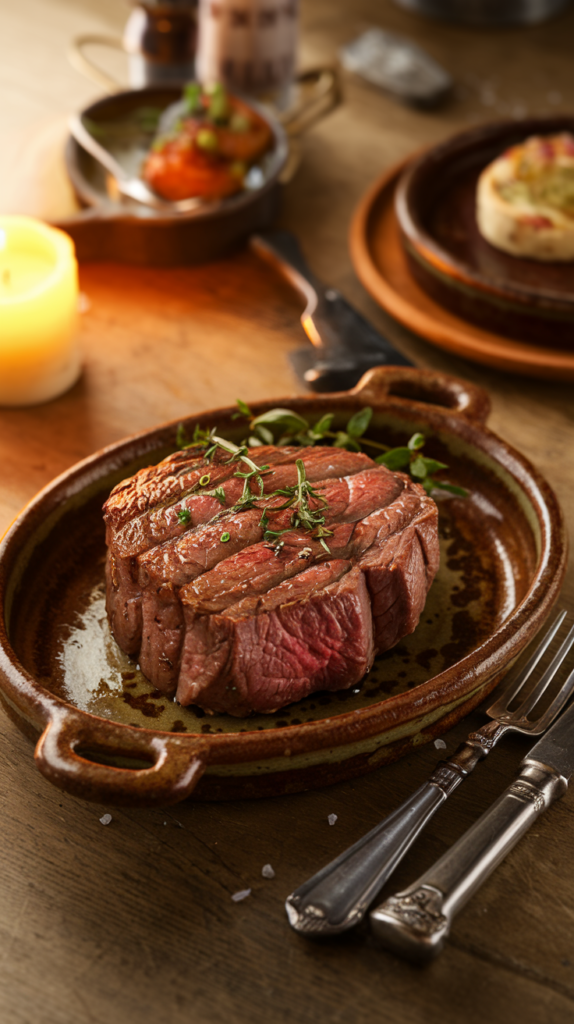
What You’ll Need: The Essentials
Before we start sizzling away, let’s gather the goods. Because nothing kills a cooking vibe like realizing mid-sear that you forgot the garlic. 😬
Ingredients for Filet Mignon:
- 2 filet mignon steaks (about 6 oz each, 1.5–2 inches thick)
- Salt & pepper, to taste (don’t be shy here—this isn’t the time to under-season)
- 2 tbsp olive oil (or any high smoke point oil)
- 2 tbsp unsalted butter
- 2 cloves garlic, smashed (no need to chop—rustic is the vibe)
- A few sprigs of fresh thyme or rosemary (either works)
Ingredients for Red Wine Reduction:
- 1 cup red wine (Cabernet Sauvignon, Merlot, or Pinot Noir all play nicely)
- 1 small shallot, finely chopped
- 1 tbsp unsalted butter (for finishing the sauce)
- ½ cup beef broth (adds depth)
- 1 tsp sugar or honey (optional, but gives a nice balance)
- Salt & pepper, to taste
Pro tip: Use a wine you’d actually drink. If it tastes like vinegar in a glass, guess what? It’ll taste worse in your sauce.
The Perfect Sear: How to Nail That Crust
Okay, let’s talk searing. This part matters a lot. Like, “don’t walk away from the pan for even five seconds” level of serious.
Step 1: Bring the Meat to Room Temp
Let those filets sit out for about 30–40 minutes before cooking. Why? Cold meat = uneven cooking. And that’s a no-go for steak royalty.
Step 2: Season Like You Mean It
Pat your steaks dry (moisture = enemy of crust), then coat generously with salt and freshly cracked pepper. Be bold. Salt is flavor, and filet is naturally mild.
Step 3: Sear in a Screaming Hot Pan
Grab a cast iron skillet if you’ve got one. Heat olive oil over high heat until it’s just barely smoking.
- Place the steaks in the pan and do not move them for 2–3 minutes. Let that crust develop.
- Flip and repeat. You’re going for a rich brown sear, not a timid gray.
Step 4: Butter Baste Like a Boss
Turn the heat down to medium. Toss in butter, smashed garlic, and herbs. Tilt the pan and spoon the buttery goodness over your steaks for another 1–2 minutes.
FYI: This step makes the difference between “good steak” and “whoa, did you go to culinary school?”
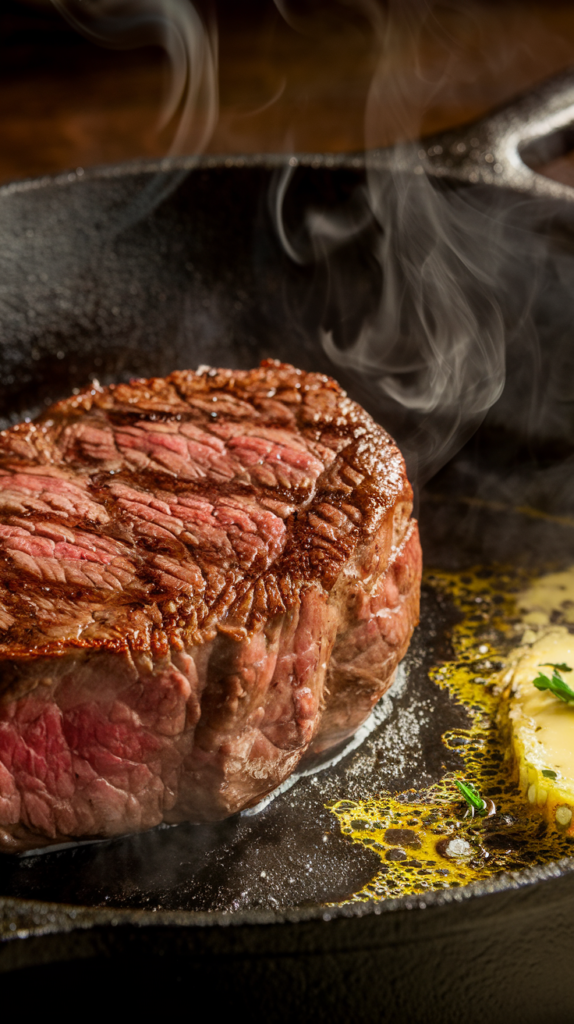
Finishing in the Oven: Because Filet Deserves It
Unless you like your filet raw in the middle (which, uh, no judgment?), you’ll need to finish it in the oven.
Step 5: Oven Time
Transfer the skillet to a preheated oven at 400°F.
- Cook for about 5–6 minutes for medium-rare, 7–8 for medium.
- Use a meat thermometer if you have one:
- Rare: 120°F
- Medium-Rare: 130°F
- Medium: 140°F
Pull it early—it continues to cook while resting.
Step 6: Rest That Meat
Place the steaks on a cutting board and let them rest for 5–10 minutes. This redistributes the juices instead of spilling them all over your plate. Patience, my friend.
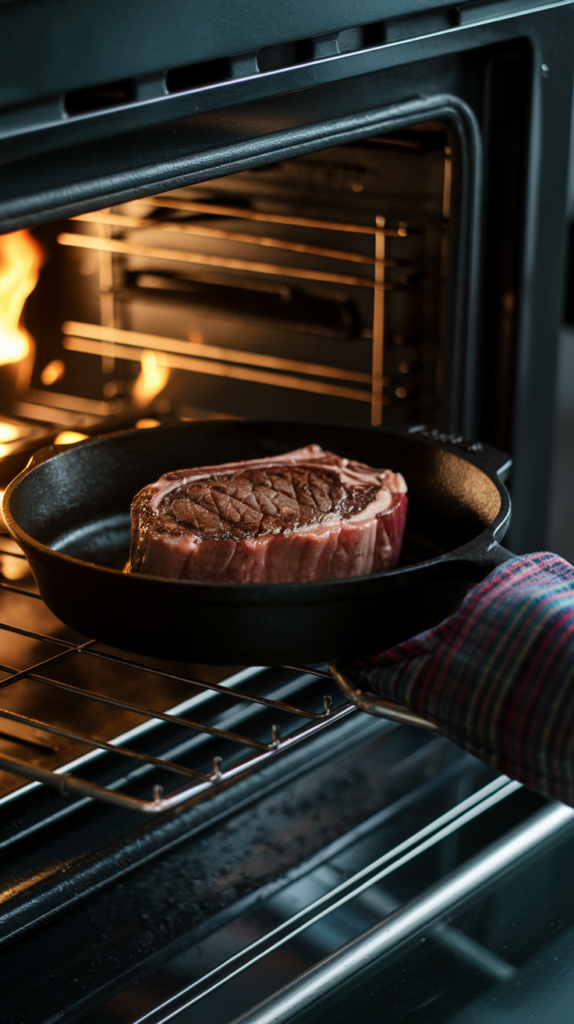
Making the Red Wine Reduction Sauce: The Real Star
Let’s be honest—filet mignon without a red wine reduction is like pancakes without syrup. Technically edible, but where’s the magic?
Step 7: Deglaze the Pan
Place your steak skillet back on medium heat (after removing any burnt bits).
- Add chopped shallots and cook for 1–2 minutes until translucent.
- Pour in red wine to deglaze the pan—scrape up all that caramelized goodness.
Step 8: Simmer to Reduce
Add beef broth and a pinch of sugar or honey (optional). Bring to a boil, then reduce to a simmer for about 10–15 minutes, or until the sauce thickens slightly.
Step 9: Finish with Butter
Right before serving, whisk in cold butter to add a glossy finish and smooth texture. Season with salt and pepper to taste.
And boom—you’ve got a rich, silky, flavor-packed sauce. Pour it generously over your filet, then try not to cry tears of joy.
Sides That Slap with Filet Mignon
Now that your filet’s ready, you might be wondering: What do I serve it with that doesn’t upstage it but still holds its own?
Here are my go-to sides that never fail:
- Garlic mashed potatoes – classic, creamy, and just right for soaking up that wine sauce.
- Roasted asparagus or green beans – something green, but still tasty.
- Buttered mushrooms – earthy, rich, and totally steak-worthy.
- Cauliflower purée – if you want to sound fancy and feel lighter. (Bonus: it’s sneakily healthy.)
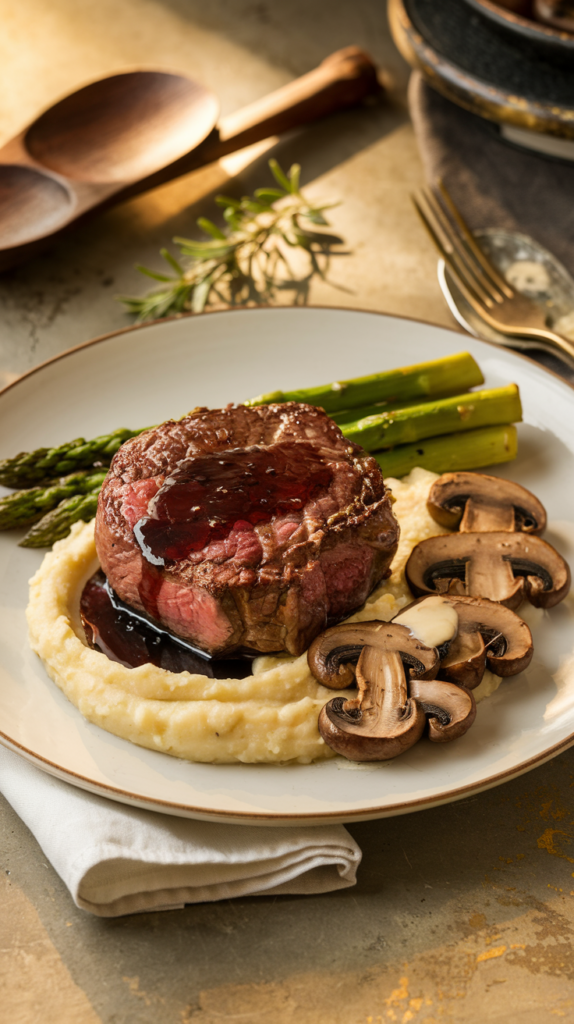
Pro Tips for Steak Mastery
Let’s take a quick timeout for some golden rules:
- Never skip the rest. Seriously, give your steak time to chill.
- Use a thermometer if you’re not confident eyeballing doneness. No shame in precision.
- Don’t drown it in sauce. Let the wine reduction enhance—not smother—your filet.
- Sear first, finish in oven. That’s how you get a crust and a perfect center.
- Avoid non-stick pans. You need those brown bits (a.k.a. flavor bombs) for your sauce.
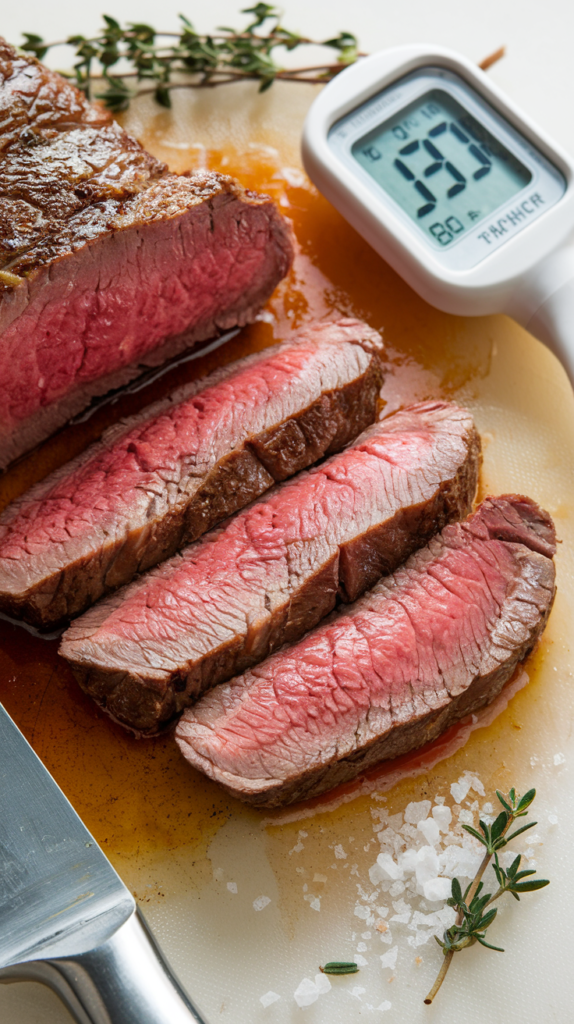
Wine Pairing? Oh, You Fancy Now
You’re already using wine in the sauce, so might as well drink some while you’re at it. 😉
Here are some easy pairings that’ll vibe beautifully with filet mignon and the reduction:
- Cabernet Sauvignon – bold, structured, and always a steak favorite.
- Merlot – smoother, fruitier, more mellow.
- Pinot Noir – lighter, but still works, especially if you’re feeling elegant.
TL;DR: Red meat, red wine. Keep it classy.

Final Thoughts: Filet Mignon Confidence Unlocked
Cooking perfect filet mignon with a red wine reduction isn’t just doable—it’s actually kinda fun. Once you’ve done it a couple times, you’ll wonder why you ever dropped $$$ on it at a restaurant.
So next time you want to impress your partner, your guests, or just yourself on a Wednesday night, break out this recipe. Trust me—you’ll feel like a total boss in the kitchen.
And hey, even if something goes a bit sideways the first time (too rare, sauce too thin), guess what? You still made filet mignon at home. That’s a win.
Now go pour yourself a glass of that wine (you’ve earned it), plate that steak like a five-star chef, and dig in.
Bon appétit, my steak-loving friend. 🍷🥩🔥
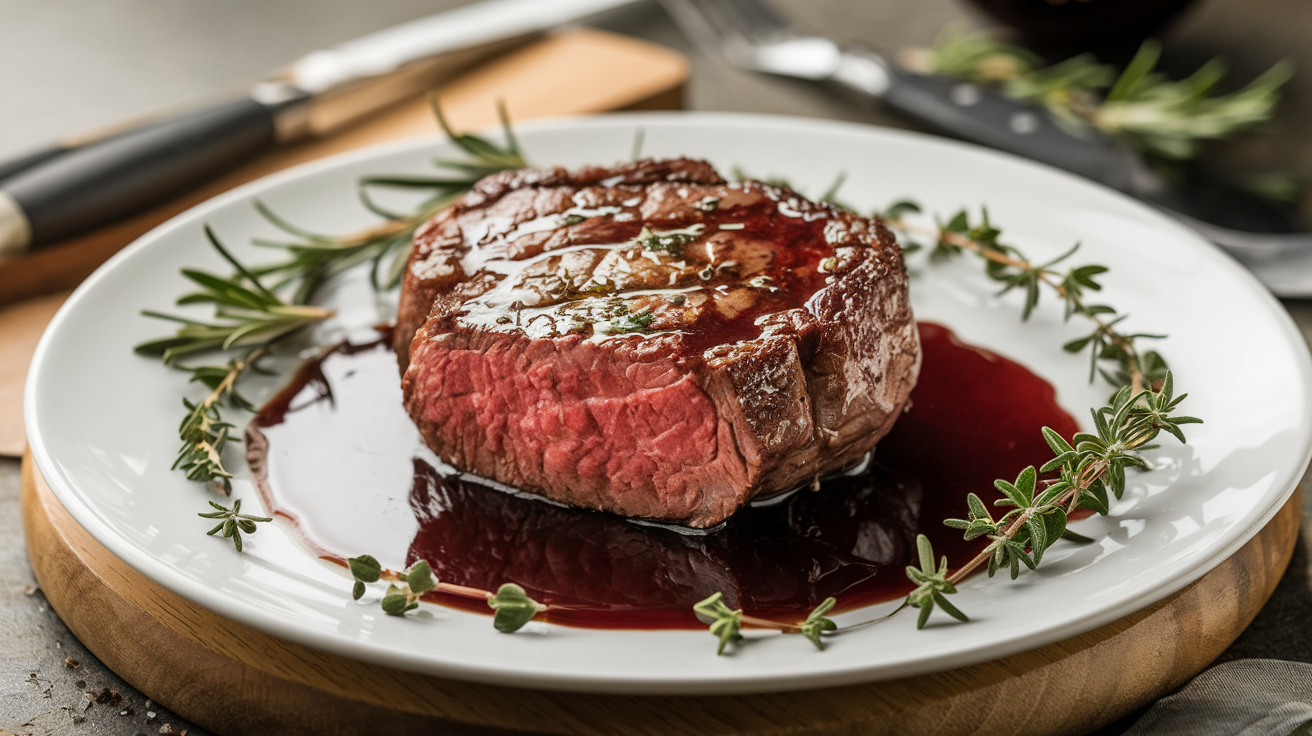
Leave a Reply